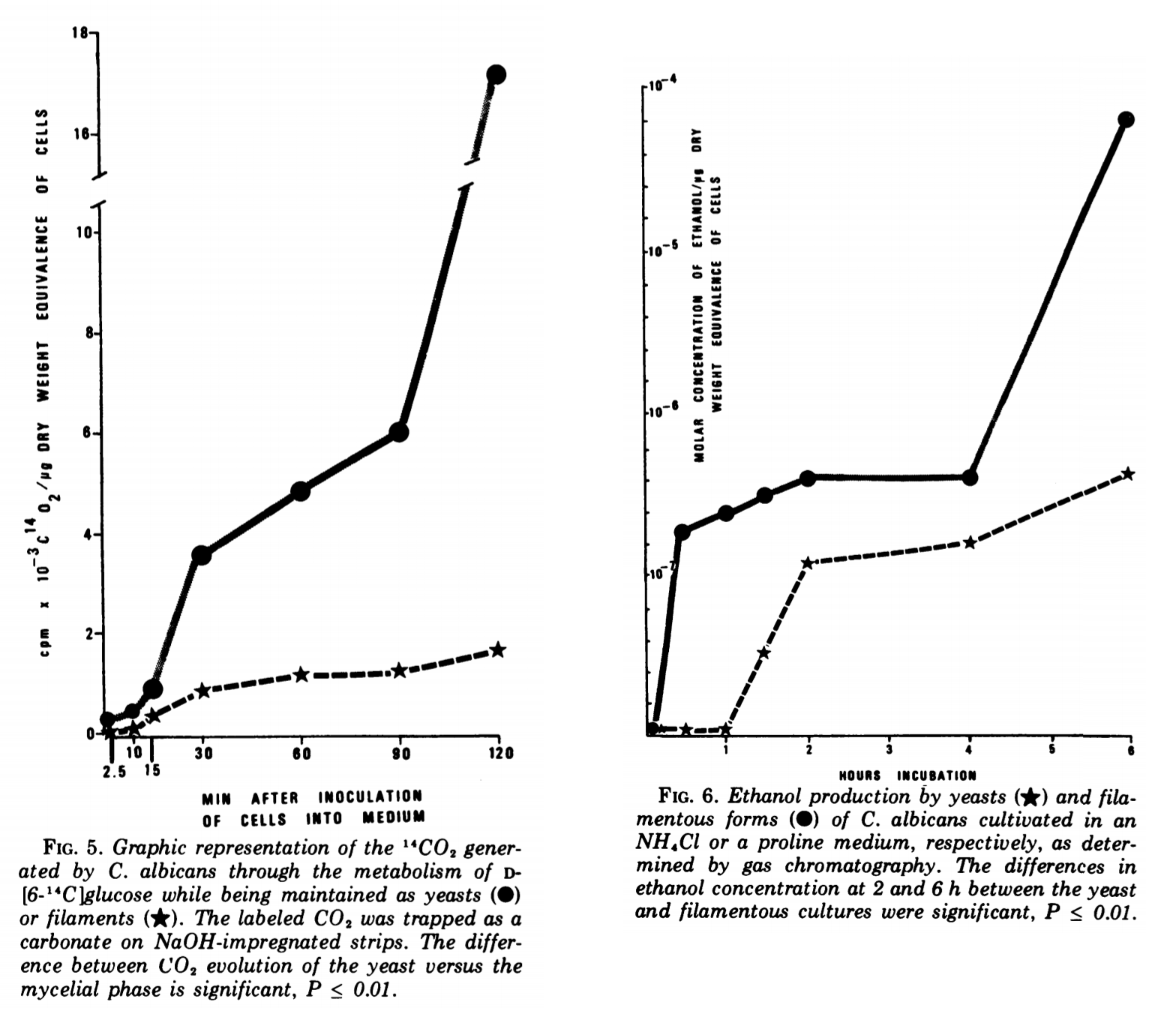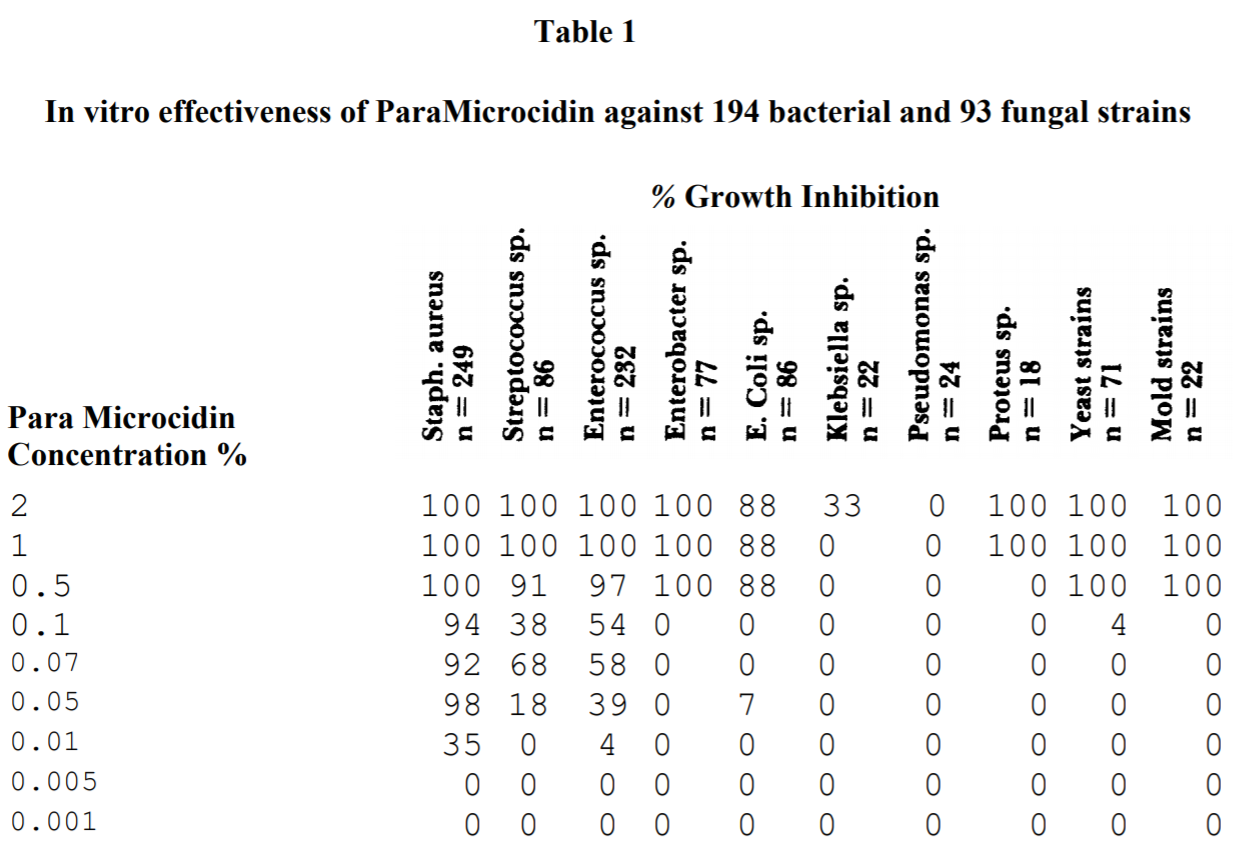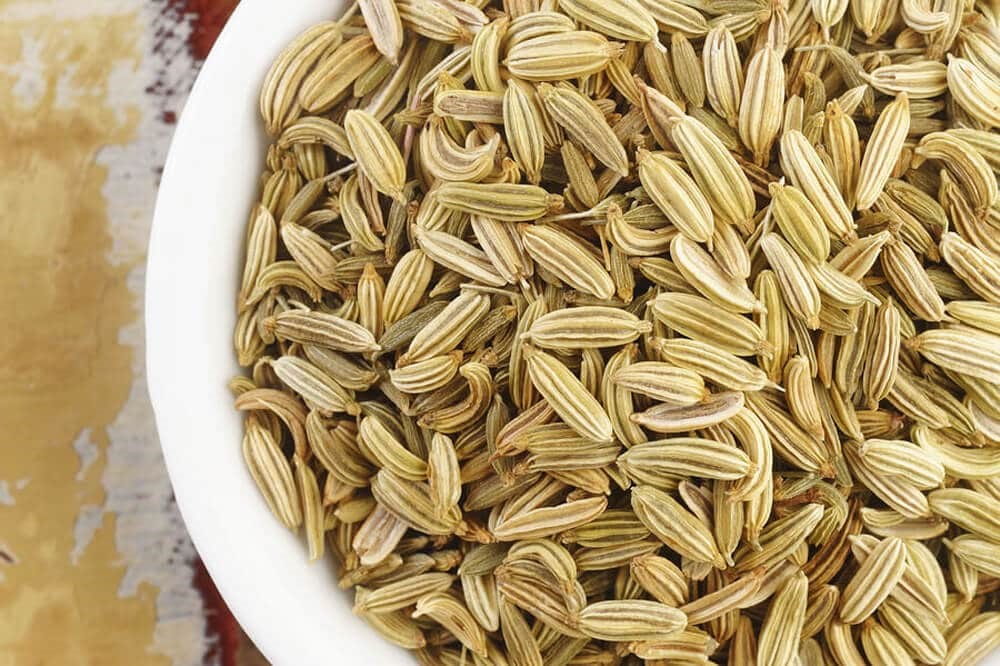See all "Gut Yeast" Section Topics

Excess yeast growing in the gut can cause gas (flatulence) and abdominal bloating. The yeast that overgrows and becomes pathogenic, in the digestive system, are all in the genus Candida. When the yeast multiply and overgrow, they produce ever increasing amounts of carbon dioxide as they digest sugars. Research indicates that single yeast cells produce the most carbon dioxide. Some species of Candida also can change form and become long germ tubes (known as hyphae). The germ tube form of Candida produces far less carbon dioxide and more ethanol. Germ tube developing Candida species, such as Candida albicans, may not be what is in your digestive system, if yeast is causing the bloating. The yeast cell variety of Candida, such as Candida glabrata, may in fact be overgrowing in your gut.
Yeast overgrowth commonly found n the digestive system can often be controlled with natural treatments, like herbs, essential oils and supplements. The large intestine is where most of the gut microbiome is concentrated. By optimizing the colon's function with supportive measures like probiotics, gas and bloating can be often alleviated and yeast overgrowth can be better managed.
Herbs, probiotics, and essential oils can help control Candida in the gut. Discussing these items is beyond the scope of this article. But, if you’ve got some time, Candida Hub has information on herbs, essential oils, and probiotics. It may prove useful!
A 1/2 Day & Yeast is Gone!
Linda Allen suffered from yeast infections for years. Through researching natural medicine & Candida, she found an efficacious solution!
Linda is one expert you want on your side! Let her show you how to get rid of a superficial yeast infection in just 12 hours; AND, keep it gone!
A 60-day, 100% money back guarantee is provided.
Visit Official Site!Candida Dieting and Excess Gas
If you are on an anti-Candida diet, you may be eating increased amounts of fiber rich vegetables. The soluble fiber in vegetables is not fully broken down in the stomach; and, therefore makes its way into the small and large intestines. When there, it is food for bacteria; which produce gas as a by-product of their metabolism. Your bloating and gas could be a direct result of eating high amounts of soluble fiber. There are various products that can help reduce the amount of gas created by the bacteria in your intestines; it may help to try one. However, if you suspect that your bloating is caused by Candida, and you do not eat a lot of soluble fiber, Candida may be the cause.
Eliminate Bacterial Vaginosis & Vaginal Odor
Jennifer O’Brien is one prominent expert on BV that knows how to get rid of vaginal odor. BV is a common infection that you don’t have to put up with.
Jennifer will show you how to naturally eliminate vaginal odor in just 3 days.
A 60-day, 100% money back guarantee is provided.
Visit Official Site!Research
A popular voice, in yeast related health issues, is Dr. C. Orian Truss. Dr. Truss was often quoted by Dr. William Crook in his Yeast Connection series of books. Dr. Truss was a forerunner, advancing the awareness of Candida induced illness. In one of his papers, published in the Journal of Orthomolecular Psychiatry [10.4 (1981): 228-238], he talks about multiple sclerosis (MS) patients who dramatically improved by undergoing anti-Candida therapy. One of these women, found that after she went on a “carbohydrate binge,” she would develop severe bloating and other digestive problems. Dr. Truss relates her story briefly in his paper stating:
A 31 year-old woman developed MS three years before nystatin was started one year ago. She started improving immediately and was asymptomatic by eight months unless, as she says, she would go "on a carbohydrate binge." This would induce abdominal bloating, diarrhea, and faint suggestions of tingling in her extremities.
http://www.orthomolecular.org/library/jom/1981/pdf/1981-v10n04-p228.pdf
Many types of Candida, such as Candida albicans, are dimorphic; i.e., they can exist in two different forms. One form is that of a single celled yeast; also known as a blastoconidia. The other, more virulent form, is a hyphal germ tube. One study, published in Infection and Immunity [12.1 (1975): 119-127], found that single yeast cells produce significantly more carbon dioxide than hyphal cells. When the two different forms of Candida albicans were observed, the yeast produced about ten times more carbon dioxide after 120 minutes of growth. The upward trend of carbon dioxide production by yeast cells, would have perhaps continued to grow steadily as the yeast cells multiplied. This could mean that Candida species that do not grow hyphae, such as Candida glabrata, would produce more gas than Candida albicans would. Candida albicans would certainly begin to change into a hyphal form of growth and generally produce far less gas.
So, if you do suffer from intense bloating and gas, you may have Candida glabrata in your digestive system. Yet, it would be impossible to tell what species of Candida are in your gut without getting a doctor to culture a sample from your stool. Although Candida albicans, in its hyphal form, produces less carbon dioxide; it does still produce some. And, if you have enough yeast overgrowth in your intestines, any type of Candida will cause a fair amount of gas as it metabolizes sugars.
The two charts below, both taken from the study, illustrate the difference in carbon dioxide and ethanol production of yeast cells and hyphal cells. Filamentous cells are the hyphal growth type of Candida; the ordinary yeast cells are not hyphal germ tubes. The chart on the right, shows the ethanol production rates for these two cell types; the x axis covers a 6 hour time frame. The chart on the left, indicates carbon dioxide gas production by the two cell types; the x axis covers a 120 minute time frame.

Another study, published in the Journal of Orthomolecular Medicine [5.155 (1990): 8], focused on the oral intake of the grapefruit seed extract product ParaMicrocidin. The subjects of the study all had some form of dysbiosis (abnormal gut microbiota). 25 patients, aged 16 to 41 years, were examined in the study. Of these 25 patients, 14 reported intermittent constipation, diarrhea, and flatulence. Bloating and abdominal discomfort were also reported by these 14 that seemed to flare up after eating a carbohydrate rich meal. The duodenum fluid (the upper area of the small intestine), and fecal matter of the patients, all revealed an increased amount of hemolytic coliforms and staphylococci, Candida spp., Geotrichum spp., and pathogenic Clostridia. These types of microscopic life in the digestive system, are often associated with a reduction in probiotic bacteria that produce lactic acid, in the digestive system.
The researchers found that the digestive symptoms, including excess gas, were ameliorated by taking ParaMicrocidin (possibly a grapefruit seed extract product). The quotation below, is taken from the study, and contains the response of the researchers; their comments are on how effective ParaMicrocidin was at dealing with the patient’s digestive problems. Below the quotation is a chart showing how well ParaMicrocidin inhibited the growth of various bacteria and fungi in vitro (in a test tube).
No side-effects were registered during the whole study. Clinically, a definite improvement of constipation, flatulence, abdominal discomfort and night rest was noticed after 4 weeks of ParaMicrocidin intake (capsules) in all 15 patients.
http://www.orthomolecular.org/library/jom/1990/pdf/1990-v05n03-p155.pdf

ParaMicrocidin was defined as a citrus seed extract; and, it appears, a more accurate definition, is a grapefruit seed extract product. Therefore, taking a natural product like grapefruit seed extract may help reduce your bloating and gas. If you are suffering from other digestive maladies, using the natural antimicrobial, grapefruit seed extract, may also help improve those symptoms as well. According to the study, ParaMicrocidin was most effective against Candida, Geotrichum sp. and hemolytic E. Coli. If your bloating is related to one of these microbes, grapefruit seed extract may help you!
Clair Goodall: Author & Nature Lover
Clair Goodall is a bee-obsessed natural medicine convert from Minnesota. She is one expert you might want to know more about!
Clair will help you protect you and your family from toxic products and chemicals and help you discover solutions from nature.
Also, Clair’s book is backed by a 60-day, 100% money back guarantee
Visit Official Site!Fennel for Gas and Bloating

According to a study published in the Scandinavian Journal of Laboratory Animal Sciences [31.1 (2004): 9-17]: “fennel and its herbal drug preparations are used for dyspeptic complaints such as mild, spasmodic gastro-intestinal complaints, bloating, and flatulence.” According to a study published in the Arabian Journal of Chemistry [2012]: “Foeniculum vulgare (Apiaceae) commonly known as fennel is a well known and important medicinal and aromatic plant widely used as carminative, digestive, lactogogue and diuretic and in treating respiratory and gastrointestinal disorders.” The study also cited research proving that fennel essential oil, and its seed extracts, have anti-Candida activity (research cited was published in the Saudi Journal of Biological Sciences [v. 14(1)], and found fennel seed extract inhibited C. albicans, C. tropicalis and C.glabrata). Consequently, fennel seed could reduce the amount of gas building up in your system and also work to fight off Candida.
A Natural, 12 Hour Yeast Infection Cure

According to a research paper published in Clinical Microbiology Reviews [12.1 (1999): 80-96], Candida species are quite ubiquitous organisms. Candida are most frequently present in the mouth; and, live in 31% to 55% of healthy people. The species that causes approximately 70% to 80% of all Candida infections is C. albicans.
The Chinese Journal of Obstetrics and Gynecology [2011 Jul;46(7):496] reports there appears to be a correlation between intestinal Candida infections and vaginal yeast infections. And, this provides a clue, as to why yeast infections in general, can reoccur.
This study states, in 148 cases of vaginal candida infections, 33.1% of the women were infected in both the intestines and vaginal area. The recurrence rate of yeast infections, in women with simultaneous intestinal infection, was significantly higher than for women who did not have an intestinal infection. This study concluded that vaginal yeast infections are highly associated with simultaneous intestinal Candida infection.
As research appears to indicate, systemic Candida infections can and do happen. A more systemic Candida infection may primarily get a foothold in the intestines; and cause a wide array of problems. If your yeast infections keep happening, a systemic Candida problem may be why.
One woman who suffered from a systemic Candida infection, for about 12 years, was Linda Allen. The systemic Candida infection that attacked Linda caused a wide range of health problems in addition to yeast infections. Some of these problems, Linda describes in her own words in the following quote:
To be honest, it was hard to pinpoint exactly what was wrong: I wasn’t really sick, but I wasn’t really well either. I had listlessness, fatigue, brain fog, stomach ailments, unexplained rashes, skin infections, and so on. It seemed like every day brought a new challenge.
My energy was sapped and I felt exhausted, which affected my grades and put a big dent in my social life.
Linda Allen’s symptoms included an embarrassing vaginal discharge, severe itching, and burning sensations. Her infections were difficult to deal with, and Linda’s health problems cost her financially as well. Linda states these infections of Candida can become excruciating when they happen as frequently as a menstrual period.
Yet, Linda spent a great deal of time in research; and even questioned health professionals who were kind enough to share some time with her. Linda even tried an array of purported "cures." Although it took a while, eventually, Linda put together a natural treatment plan she hoped would solve her Candida situation.
After spending about a year refining her new approach, Linda tried her system on herself. It worked amazingly well. Linda even returned to a few medical doctors to get tested for the presence of infections. These tests revealed all indicators of infection had vanished! Linda was indeed well again, after such a long, difficult journey.
Linda has since published a book detailing how to copy her success. She also includes a 12 hour yeast infection cure that can get rid of a superficial (such as a genital yeast infection or oral thrush) yeast infection in about 12 hours.
Linda’s publisher protects those who get her book with a 60 day, 100% money back guarantee. Linda’s publisher, a subsidiary of the United States based firm Keynetics Incorporated, is a reputable digital retailer that has been around for a long time. They have great customer service, and make getting a full refund on Linda’s book quick and easy. If you’re not satisfied, you can quickly get all your money back.
If you would like to learn more about Linda’s journey to freedom from Candida, see reviews of others who tried her natural system, or find out more about her efficacious book; you can find more information at Linda Allen’s website.
Author: Mr. Nicholas Gross

Nick Gross is a natural medicine enthusiast who has been researching and writing about natural medicine since 2008. Nick is primarily a web developer but also researches and authors written and video content about natural health. Nick has a bachelor’s degree in Management Information Systems from the University of Northern Iowa.
Disclaimer
The information on this website is not a prescription for anyone. This information is for informational or educational purposes only, and is not a substitute for professional medical advice or consultations with healthcare professionals.
Affiliate Disclosure
Some of the links provided on this website are affiliate links. When a purchase is made through these links, Candida Hub earns money from commission. This helps to keep the website up and helpful to people for free. Thank you for any support!
Stay Up to Date
If you enjoyed this article, consider following / liking our Facebook page. This page is primarily utilized to alert followers of new articles that are put on Candida Hub. Candida related news is also discussed. While you are there, you can see what has been more recently added to Candida Hub.
SOURCES:
- http://www.orthomolecular.org/library/jom/1981/toc4.shtml — Truss, C. Orian. "The role of Candida albicans in human illness." J Orthomol Psychiatry 10.4 (1981): 228-238. PDF Available Here
- http://www.ncbi.nlm.nih.gov/pubmed/1095490 — Land, G. A., et al. "Factors affecting filamentation in Candida albicans: changes in respiratory activity of Candida albicans during filamentation." Infection and immunity 12.1 (1975): 119-127. PDF Available Here
- http://www.orthomolecular.org/library/jom/1990/toc3.shtml — Ionescu, G., et al. "Oral citrus seed extract in atopic eczema: In vitro and in vivo studies on intestinal microflora." J Orthomol Med 5.155 (1990): 8. PDF Available Here
- http://sjlas.org/index.php/SJLAS/article/view/57 — Hanefi, Ã., et al. "Hepatoprotective effect of Foeniculum vulgare essential oil: A carbon-tetrachloride induced liver fibrosis model in rats." Scandinavian Journal of Laboratory Animal Sciences 31.1 (2004): 9-17.
- http://dx.doi.org/10.1016/j.arabjc.2012.04.011 — Rather, Manzoor A., et al. "Foeniculum vulgare: A comprehensive review of its traditional use, phytochemistry, pharmacology, and safety." Arabian Journal of Chemistry (2012).
- http://www.journals.elsevier.com/saudi-journal-of-biological-sciences/ — Abed, Kawther F. "Antimicrobial activity of essential oils of some medicinal plants from Saudi Arabia." Saudi Journal of Biological Sciences; v. 14(1); ISSN 1319-562X; 2007; p. 53-60
- https://doi.org/10.1128/CMR.12.1.80 -- Fidel, Paul L., Jose A. Vazquez, and Jack D. Sobel. "Candida glabrata: review of epidemiology, pathogenesis, and clinical disease with comparison to C. albicans." Clinical Microbiology Reviews [12.1 (1999): 80-96].
- https://pubmed.ncbi.nlm.nih.gov/22041440/ -- Lin XL, Li Z, Zuo XL. "Study on the relationship between vaginal and intestinal candida in patients with vulvovaginal candidiasis." Chinese Journal of Obstetrics and Gynecology (Zhonghua fu chan ke za zhi). [2011 Jul;46(7):496].








